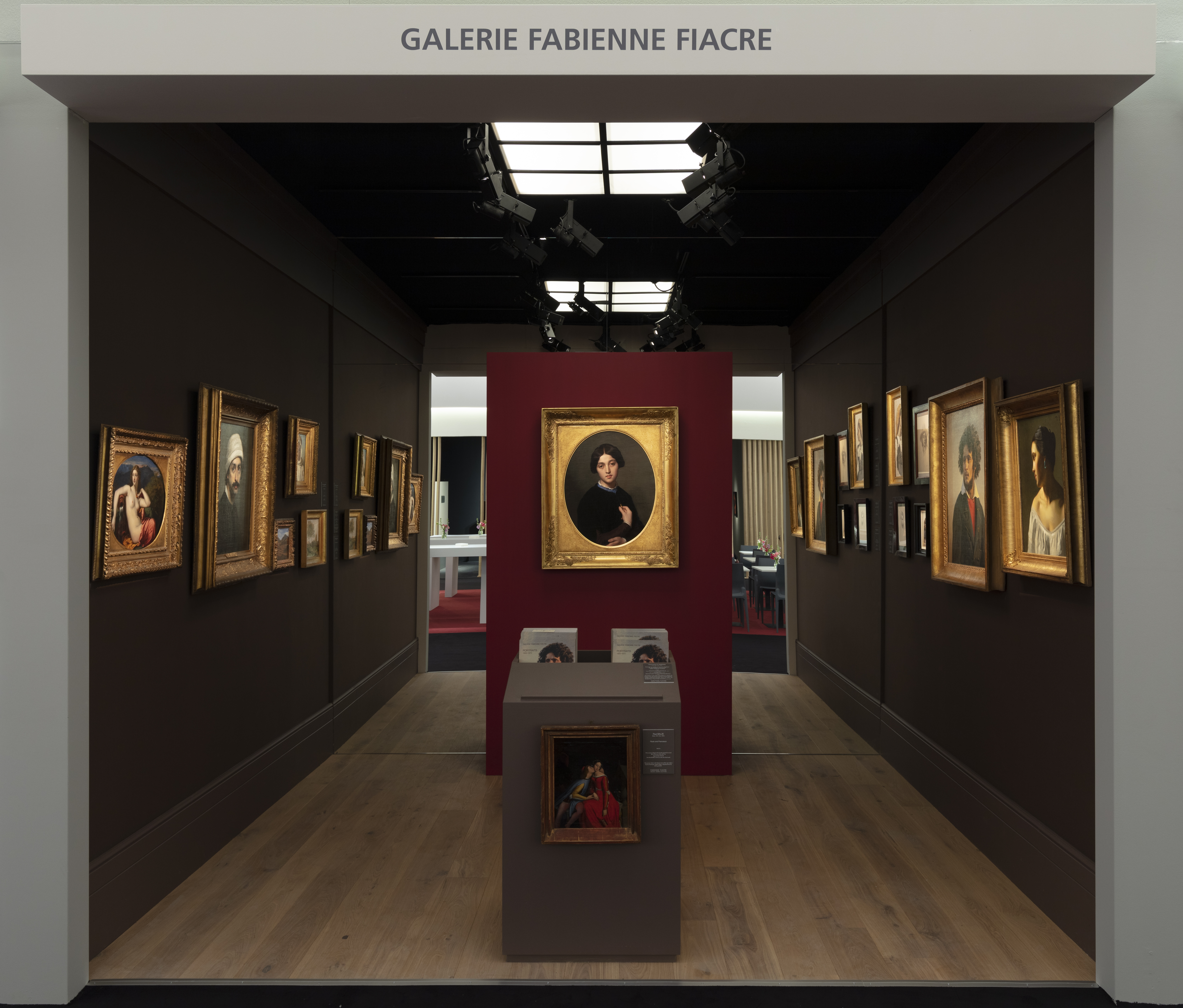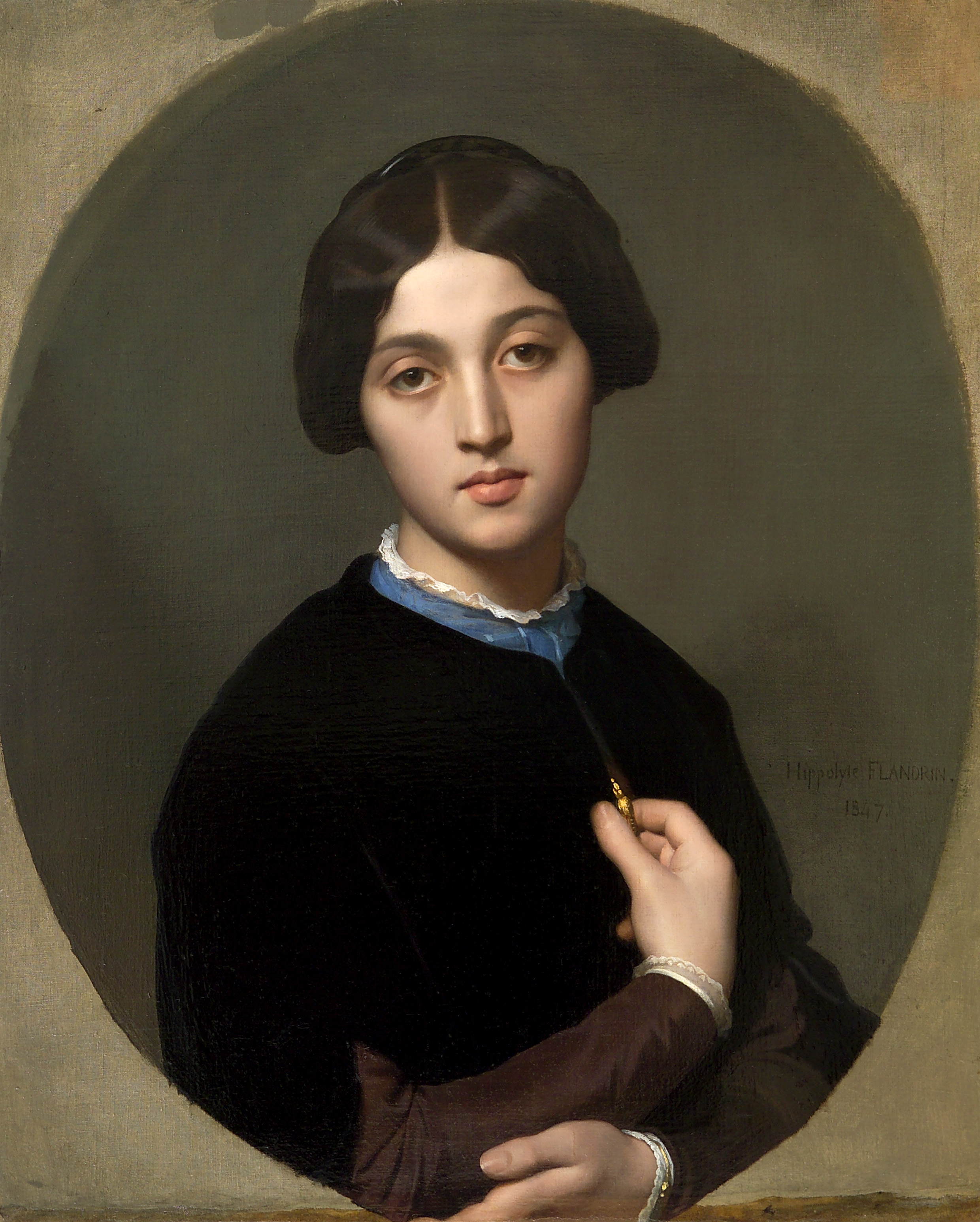Tefaf, Maastricht
Portraits
March 2020
View the article on the Tefaf showcases in the catalogue of the fair
Fabienne Fiacre specialises in 19th century paintings and drawings, and at TEFAF, is concentrating on her particular preference for portraits, specifically those emphasising the importance of line over colour, traditionally demonstrated by the work of Ingres and his pupils contrasted with Delacroix.
She is presenting several arresting examples, including an important rediscovery, the Portrait of Adèle Anthoine-Prélard at the age of seventeen (Madame Auguste Cottin) by Hippolyte Flandrin (1809 – 1864).
The artist exhibited this painting at the 1848 Salon and it was displayed again after his death in 1865, with sixty-two other works, as a tribute to his career (n°26, Portrait of Madame Cottin is listed between the Portrait of Napoléon I, legislator, and the famous double Portrait of the Dassy brothers, now in the Cleveland Museum of Art). This beautiful female portrait is a first step towards a re-evaluation of Ingres’ favourite pupils, Hippolyte and Paul Flandrin, who, with their brother Auguste, will be highlighted in a forthcoming exhibition to be held at the museum of Lyon, their native city, in 2021.
Along with the young Madame Cottin, other paintings or drawings by Henri Lehamann (1814 - 1882), Amaury-Duval (1808 - 1885) and Théodore Chassériau (1819 - 1856), all sharing an “air de famille”, reflect the diversity of Ingres’ influence on his pupils.
To the great names will be added others, to be rediscovered, what’s important is that each work creates emotion. Fabienne feels professionally closer to the profile of the "collector-merchant", for whom each purchase is guided by his personal taste. With public auctions nowadays making a number of private transactions, what is left for dealers if not to present the finest possible selection of original works in impeccable quality and condition - their rarity is nowadays important to underline - and which they have taken care of by restoring and framing them.
By paying homage to the artists in presenting their works the best possible way within the framework of a hanging enhanced by a scenography entrusted to René Bouchara, Fabienne Fiacre hopes that this intimate part of the artist seduces, enchants or captivates the imagination but never leaves the visitor indifferent.


